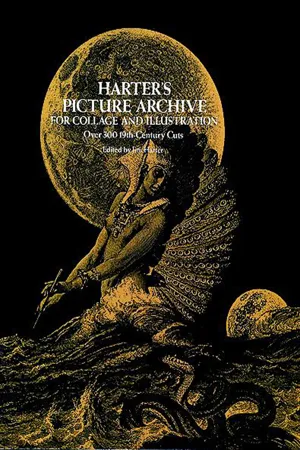
- 192 pages
- English
- ePUB (mobile friendly)
- Available on iOS & Android
Harter's Picture Archive for Collage and Illustration
About This Book
Men in strange flying machines … Mysterious veiled women … Exotic animals, birds, insects, plants … Eerie faces … Wonderful technological devices … Unusual landscapes, cityscapes, moonscapes … Children, couples, Victorian buildings, and interiors … Over 300 authentic and strikingly visual nineteenth-century engravings selected from rare periodicals, books, and catalogs, dating mostly from 1870 to 1900, and valuable for collagists, commercial and graphic artists, designers, illustrators, and others.
These rare pictures, both real and imagined, of relics, rituals, people, animals, and geometric shapes and designs provide much-needed material for collage and illustrations — material of the highest quality that is difficult if not impossible to find elsewhere. There are 25 full-page scenes of historic, natural, and city vistas that are ideally suited as background for collages and other projects. All of the pictures are sharply defined and clearly printed on one side of each page to allow for optimal use of their lines and textures and to eliminate the possibility of "show-through."
The illustrations were chosen by the well-known collagist Jim Harter, whose work has appeared in The New York Times, New York magazine, and other publications. Mr. Harter's artistry is evident in his selection of images that — besides being useful as decorative or illustrative elements — have a strong visual impact and symbolic potential. Line engravings offer unique textural qualities, and as Mr. Harter writes, they "have a dream-like quality that other material cannot duplicate." Mr. Harter's introduction gives a brief history of collage as well as instructions on techniques and materials and an overview of his own perspective on the art. To illustrate the various ways these nineteenth-century cuts can be used, six collages composed entirely of images from this book are included.
Frequently asked questions
Information
INTRODUCTION
Table of contents
- DOVER PICTORIAL ARCHIVE SERIES
- Title Page
- Copyright Page
- Table of Contents
- INTRODUCTION